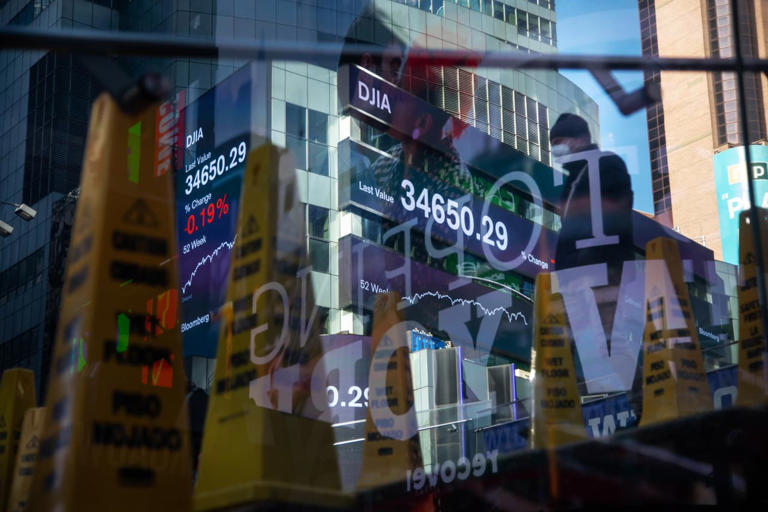The stock market performance in 2024 has been a topic of keen debate, largely influenced by which benchmark one uses to define the “market.”
Financial experts commonly turn to the S&P 500 as the primary indicator of U.S. stock market performance. According to this index, the market has soared by an impressive 15% this year. This surge is largely fueled by investor enthusiasm for technology stocks. Notably, industry giants like Nvidia, Microsoft, and Apple have each achieved market valuations surpassing $3 trillion in 2024, significantly bolstering the S&P 500’s upward trajectory.
In contrast, the Dow Jones Industrial Average (DJIA), renowned as the oldest and most recognized barometer of the U.S. economy and stock market, tells a more modest story. The Dow has seen a relatively conservative increase of just under 3% this year.
Matthew Tuttle, CEO of Tuttle Capital Management, underscores the disparity between these indices, emphasizing, “The S&P 500 clearly indicates a robust bull market, while the Dow presents a distinctly different picture.”
The divergence in performance can be attributed to the distinctive methodologies of these indices. Unlike the S&P 500 and Nasdaq Composite, which are weighted by market capitalization—meaning larger companies exert greater influence—the Dow employs a price-weighted approach. This means stocks with higher prices hold more sway over its movements. For instance, UnitedHealth Group, with a stock price of $481, has experienced an 8.6% decline this year. In contrast, Intel, with a lower-priced stock, has seen a sharper drop of nearly 40%. Despite Intel’s larger percentage decline, UnitedHealth’s impact on the Dow has been more pronounced due to its higher stock price.
Critics often question whether the Dow’s composition effectively represents the broader market. With only 30 constituent companies, the Dow may not fully capture the diverse dynamics and comprehensive economic breadth portrayed by broader indices.
Over its century-long history, the Dow has undergone approximately 119 component changes. Selections are guided by factors such as historical growth, corporate reputation, investor interest, and sector representation, rather than strict rules.
Efforts have been made to potentially enhance the Dow’s representation. For example, suggestions have been put forth to replace struggling entities like Boeing, which has faced significant challenges and seen its stock plummet by 33% this year, with more resilient performers like General Dynamics. Known for its robust performance and a 15% gain year-to-date, General Dynamics has been highlighted as a suitable candidate to better reflect the industrial sector within the index.
In the technology sector, advocates propose including dominant players like Google-parent Alphabet, which has become more accessible for the Dow following its stock split in 2022. Alphabet’s presence could provide a more accurate depiction of the tech industry’s influence on the market.
Similarly, replacing underperforming stocks such as Intel with companies like Micron Technology, which has seen an 80% surge in its stock value this year amidst optimism about AI-related growth, could potentially strengthen the Dow’s alignment with current market trends.
In conclusion, while the S&P 500 portrays a thriving market driven by tech sector titans, the Dow Jones Industrial Average offers a more reserved outlook due to its specific composition and methodology. The ongoing dialogue among investors and analysts continues to revolve around the relevance of these indices in accurately reflecting the entirety of market dynamics and economic performance.
